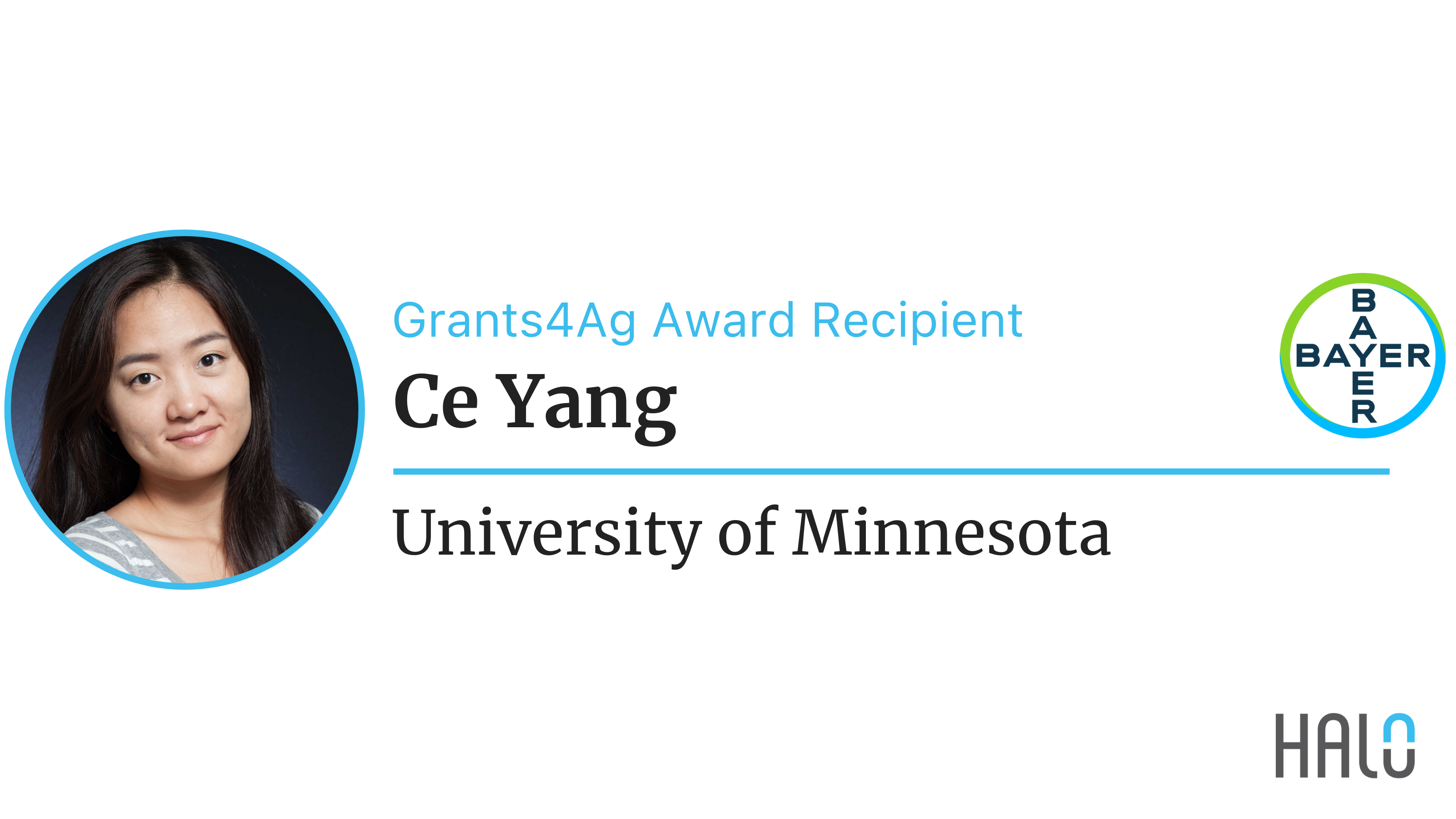Population growth and climate change are making precision agriculture increasingly important. Prof. Ce Yang is developing tools to make it better through her research on airborne and ground sensing technologies. View Halo Profile >>
Tell us about your research.
My research focuses on drone and ground-based remote sensing technologies used in precision agriculture and high-throughput phenotyping. There are several agricultural applications that my group is currently working on: crop nutrient uptake detection and disease detection using drone hyperspectral imaging, and ground-based real-time disease detection using color imaging and edge computing. We train advanced AI models for specific detection and classification tasks based on high-quality imaging data that we collect from crops and agricultural produce.
By applying advanced airborne and ground sensing and data analysis techniques, we work with researchers and agronomists to achieve better crop management, helping farmers with the 4R’s in precision agriculture: to apply the correct resource at the right time, with the right rate, into the right locations.
Can you explain that to a non-scientist?
By applying advanced airborne and ground sensing and data analysis techniques, we work with researchers and agronomists to achieve better crop management, helping farmers with the 4R’s in precision agriculture: to apply the correct resource at the right time, with the right rate, into the right locations. We also help crop breeders make more timely decisions from larger field trials to select the best crop varieties with stronger disease resistance and stress tolerance via high-throughput phenotyping.
Why did you choose this area of research?
Population growth and climate change require sustainable intensified agriculture to develop resource-efficient crop cultivars and reduce yield losses. Advancements in sensing and data analysis techniques can be used to increase crop productivity and quality while avoiding excessive chemical input to the agricultural field and the environment. Therefore, I chose to become an agricultural engineer to develop cohesive agricultural remote sensing systems that integrate autonomous data acquisition platforms, state-of-the-art deep learning algorithms, and streamlined data processing for various applications.
Advancements in sensing and data analysis techniques can be used to increase crop productivity and quality while avoiding excessive chemical input to the agricultural field and the environment.
How could your Grants4Ag project someday impact #healthforall #hungerfornone?
Combining imaging techniques with advanced learning models for the analysis of sensing data provides the ability to identify crop threats and predict yield potential in a timely manner and lead to major improvement in agricultural production in both quantity and quality, while addressing the environmental issues raised by agricultural practices. The Grants4Ag project together with my other efforts will help in eliminating hunger and improving health by providing more high-quality and safer agricultural products.


